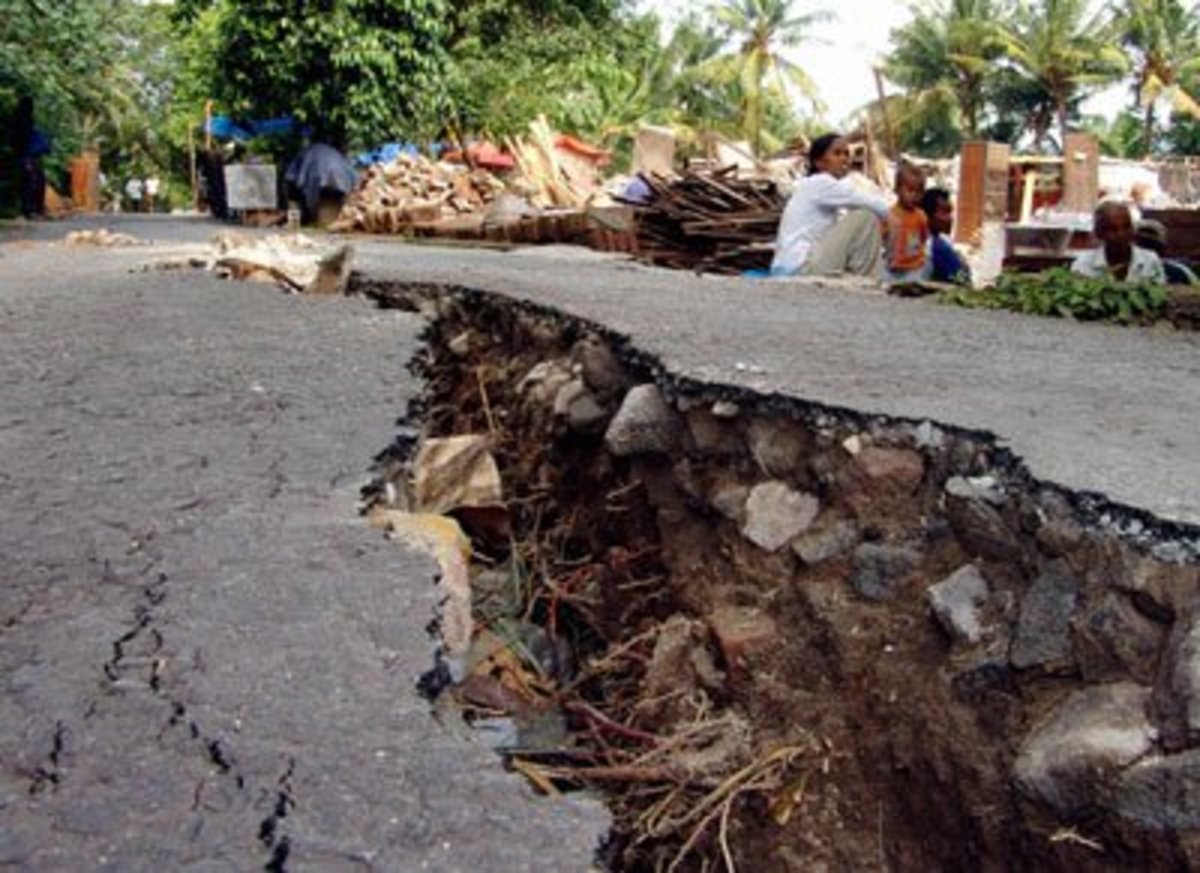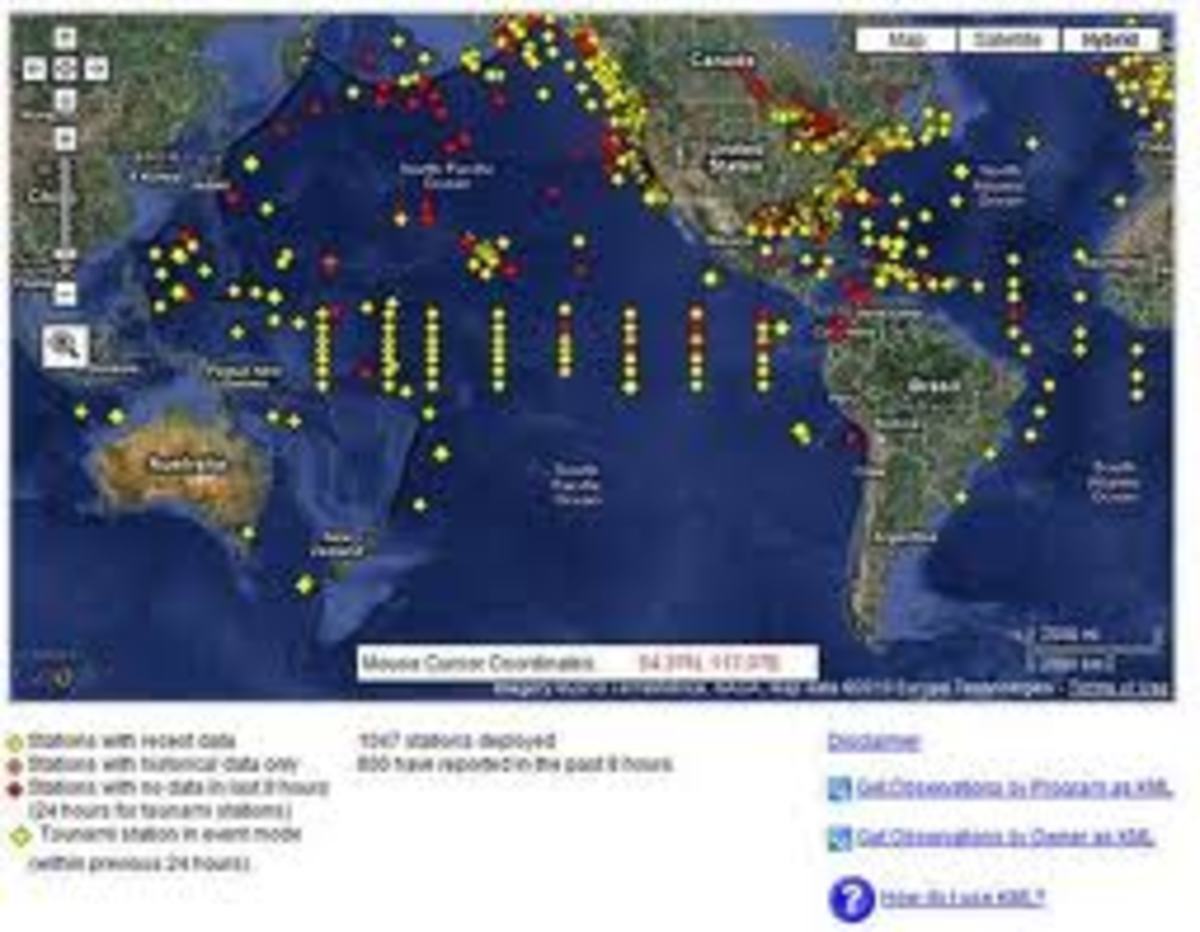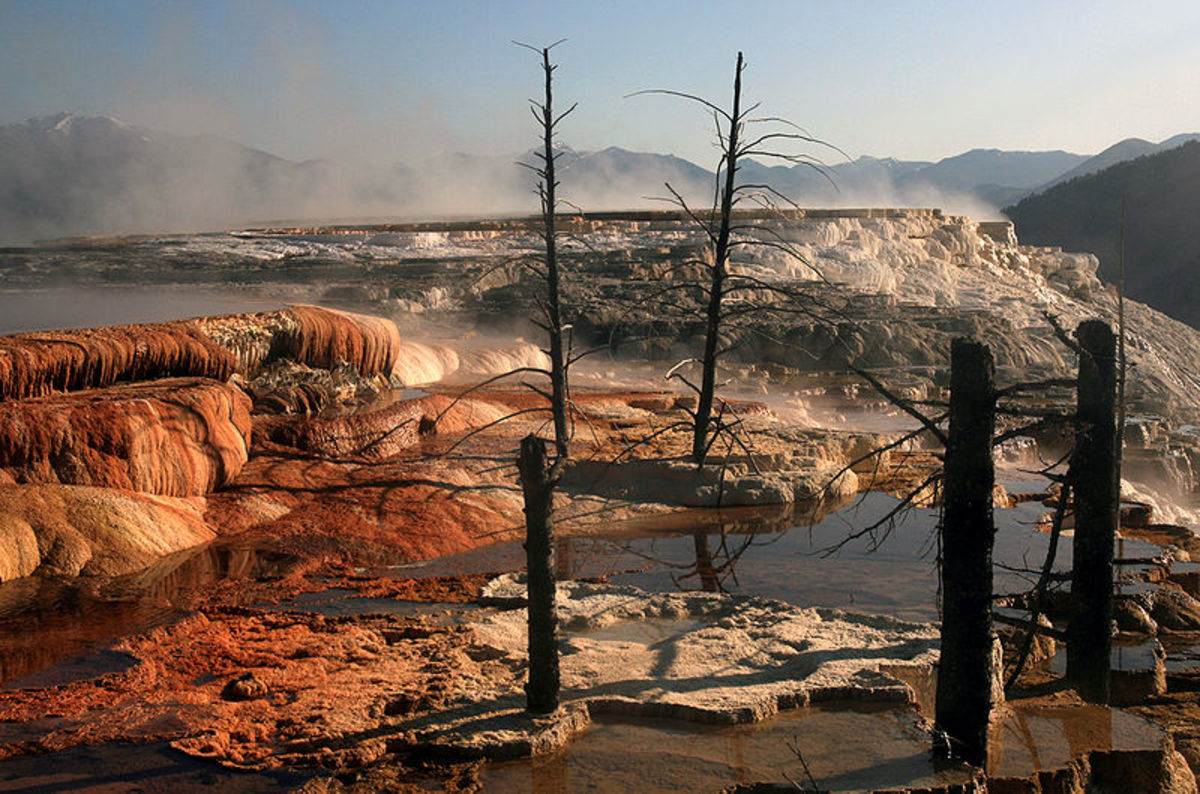Earthquake Review and Forecast for February 2016
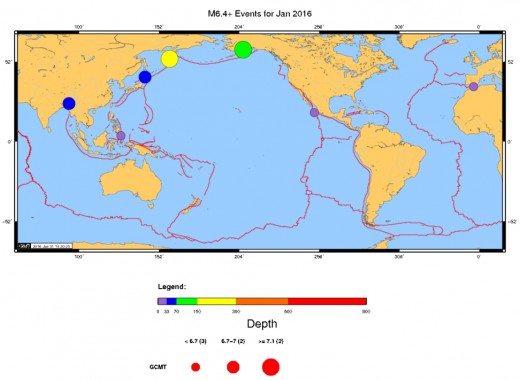

Although January was just an average month for earthquakes, there was still quite a bit happening to report on. On January 3, there was a 6.7 magnitude earthquake in India, occurring at 4:35am, local time and responsible for over 20 deaths and 300 injuries. It was the most deadly earthquake of the month.
A few days later (on the 6th & 7th of the month) there were two noteworthy earthquakes in the continental United States: a 4.4 magnitude quake in Banning, California and a 4.8 magnitude event about 20 miles NW of Fairview, Oklahoma. At around the same time (on the 6th) there was a nuclear explosion from a test in North Korea that was recorded by the USGS as a 5.1 magnitude event.
On January 11th there was a 6.5 magnitude quake near an island south of the Philippines, with no reports of damage or injuries and on the the 14th, there was a 6.7 magnitude event in northern Japan with 2 injuries and no reported damage.
The Pacific northwest didn't have any major earthquakes but they were in the news with a report that the potential mega quake that the future has in store for the area will bring with it the potential for thousands of landslides. An article published on the net January 14th warned of an imminent, deadly earthquake in the area based on reports of part of the sea floor dropping suddenly. Local seismologists went on the record as saying that the incident didn't happen and that the report was a hoax. Related to that, an earth scientist with the USGS got some flack from people on twitter when he stated in a Q&A that the area wasn't even overdue yet for the mega quake that everyone is talking about because the recurrence of such events is 400 to 600 years and it's been 316 years since the last one (which occurred in January, 1700). They are overdue for an event of 8.2 magnitude or higher however (with at least a 37% chance of it happening in the next 50 years). That is likely on the southern portion of the Cascadia Subduction Zone or CSZ.
Also related to the Pacific NW is an Earthquake Resilience Summit being held at the White House during the first week of February. Scientists from the Pacific Northwest Seismic Network are attending. One of the key aspects of the summit will be plans to build an earthquake early warning system in the area and details will be announced on Tuesday the 2nd at 9:30am, Pacific time during a live stream of the event.
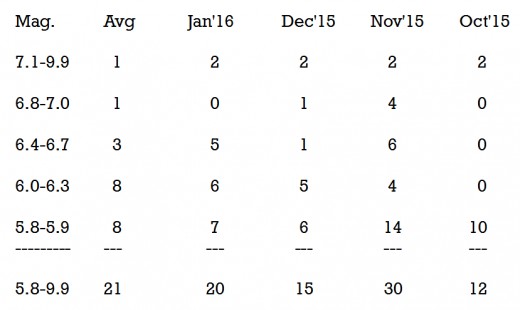
Significant earthquake activity took a break for about a week until a 6.6 magnitude event occurred off the west coast of Mexico on the 21st. It was of shallow depth but too far away from shore to cause any damage or injuries. Three days later, there was a 7.1 magnitude quake occurring about 160 miles southwest of Anchorage. It took place 75 miles below the surface of the earth. Since it was fairly deep and far enough away from Anchorage, most of the damage was limited to roads and items knocked off store shelves. However, because of its depth, the shaking was felt over a wider area than an average quake of that size. The next day (on the 25th), there was a 6.35 magnitude temblor in the Mediterranean, north of Morocco. The largest earthquake of the month was a 7.2 magnitude event which occurred on the Kamchatka peninsula of Russia on the 30th. Although this quake was fairly large and deep, the area is capable of producing much bigger and much deeper earthquakes. There were no reports of damage or injuries from this event.
As February begins, we should perhaps be a bit more prepared for large earthquakes than normal. At least, based on the historical record, the first week of February, especially the 4rd and the 5th, are prone to deadly seismic events. Some examples of this are the Riobamba, Ecuador earthquake of 1797 (40,000 deaths), The Calabria, Italy Earthquake of 1783 (at least 30,000 deaths), and the Guatemala City earthquake of 1976 (23,000 deaths). This year however, there are no major celestial indicators suggesting that possibility (unlike what was occurring at the time of those earthquakes).
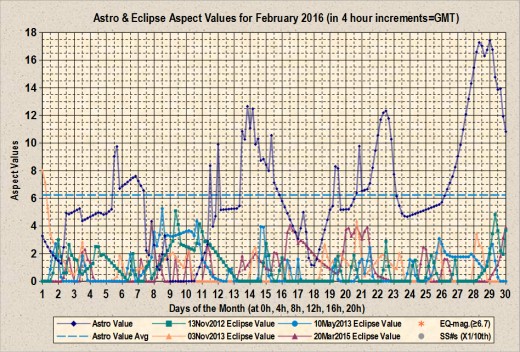
That isn't to say that there is no possibility of such an eventuality. There is a slightly higher probability than average on the 5th for an earthquake of at least a 6.8 in magnitude to occur somewhere in the world. However, there is a much higher probability of that on the 13th, 14th and 15th, the 20th, 21st and 22nd, and the 27th, 28th and 29th of the month of February. My impression for activity in the month of February for 2016, is that there should be at least an average number of 6.8 magnitude or larger earthquakes during the month (average is one to three such quakes in a given month). Because I am short on time for this month, I am going to skip likely locations of earthquakes for the dates given above.
Some of you may be wondering how I did in regards to my last forecast for the month of January 2016. In general, I was accurate, but that doesn't come as much of a surprise to me. I predicted that it would be an average month, producing no more than three significant events (6.8 magnitude or higher). There were two such events for the month, which is average. Those two events fell within my seismic windows, defined by Astro-aspect values, but those windows took up around 2/3rds of the month, so having the two events fall inside those windows is not really shocking. This month, the windows take up less than half of the month, so any earthquakes of at least 6.8 magnitude that fall inside them would be more significant this time around.
© 2016 Joseph Ritrovato





